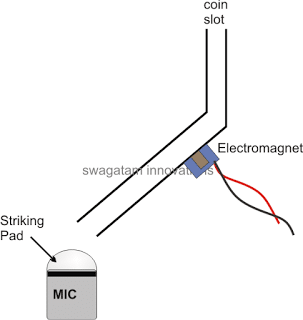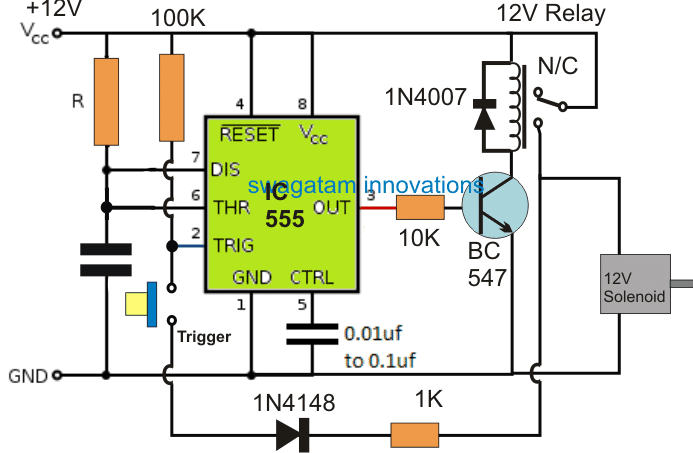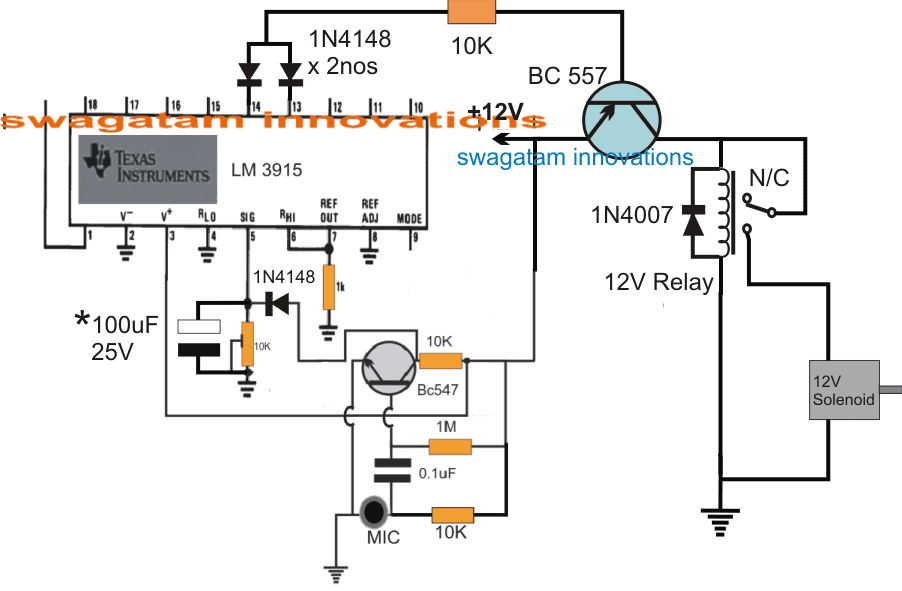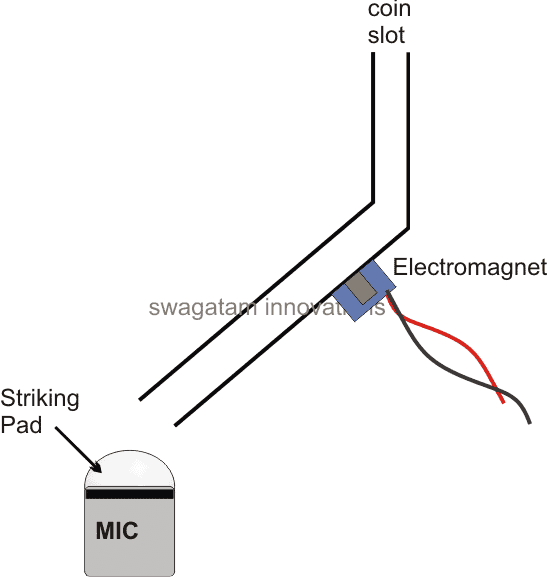
A simple tea, coffee vending machine circuit idea is explained here which allows a customer to access the beverage with a press of a button and by inserting a genuine 5 rupee coin. The idea was requested by Mr. Ramesh.
Circuit Objective and Requirement
I need the water puling mechanism like coffee vending machine if we need 100 ml of water it should be pull 100 ml water or if we need 200ml it should be pull 200ml water please help me on this.
The Design
As per the request above, a simple beverage pulling machine could be built by using the following circuit:
Referring to the diagram, it's a simple monostable timer made around the indispensable evergreen IC 555.
Pressing the yellow/blue button triggers the IC in the counting mode and simultaneously actuates the relay.
The relay switches ON the 12V liquid controller solenoid valve which opens internally and allows the beverage to pass through it until the counting period is elapsed, and the IC switches OFF the relay.
Circuit Diagram

The desired delay period for which the relay and the solenoid should remain switched ON can be calculated using this IC 555 calculator software.
The above design only takes care of the timed solenoid operation in response to pressing of a button, however for implementing the design accurately as a tea/coffee vending machine circuit, it needs to be upgraded with a foolproof payment option, so that the customer is able to insert a legitimate 5 rupee coin for accessing the beverage.
Making a Tea Coffee Vending Machine
In order to upgrade the above concept into a tea or coffee vending machine, the unit must preferably include a foolproof payment accepting facility.
I have tried to implement this by introducing a system which will hopefully be able to detect the difference between a genuine 5 rupee coin and a false one.
Although recognizing and confirming a currency coin through ordinary means is impossible, the following technique offers some degree of accuracy and makes sure no duplicate metal coin can be used for accessing the beverage.
Coin Weight Detection
I have tried employing a weight detection, and a non-ferrous (non magnetic material) detection procedures for the coin, the design can be learned from the following explanations:

The above circuit can be used for roughly determining the weight of the coin by allowing the coin to strike on an electret mic and then measuring the striking or vibrational force through a LM3915 circuit.
Heavier coin will supposedly create higher voltage spikes from the MIC output, and vice versa.
The difference in the intensity of the voltage spikes will hopefully create corresponding levels of voltage shifts across the output pins of the IC from pin#1 to pin#10.
The 10k preset at pin#5 is appropriately adjusted such that a genuine coin generates a spike that may reach around pin#13/14. This level would be held intact for so long as the 100uF capacitor is discharged.
Since the relay driver transistor BC557 is attached with the pin#13/14 of the IC, it should immediately conduct whenever a legitimate coin is inserted, and subsequently actuate the relay and the solenoid.
The solenoid actuation allows the person to collect the beverage in the form of tea or coffee in the cup.
In case a false imitation coin is inserted which may be lighter or heavier in mass might create a voltage spike either not sufficient to go up to pin13/14, and might only reach across the lower pinouts of the IC, or surpass the pn13/14 of the IC and trigger the upper irrelevant pinouts of the IC.
In either case the relay driver transistor would not activate thwarting the false attempt by the fake coin
The 100uF capacitor is arbitrarily selected, this needs to be tweaked with some trial and error to ensure that the relay activates for a period of time that may be just enough for filling the beverage cup up to its rim.
Non-Ferrous coin Material detection.
A true 5 rupee coin is supposed to be non-ferrous and non-magnetic.
The coin could be tested for its non-ferrous condition by the following method:

In the above set up we can see how the proposed MIC needs to be arranged along with a channelized guide for enabling the coin to slide down to the destination from its drop slot.
The channel or the pipe through which coin must pass can be seen connected with a strong electromagnet from the outer side of the tube.
This electromagnet needs to be continuously switched ON throughout the operational period of the machine, so that in case a fake coin (made up of iron or steel) is inserted, it gets caught with the electromagnet and the beverage is never made available to the person attempting the theft.
If you have any doubts or questions regarding the above explained tea, coffee vending machine circuit, you may feel fee to ask the same through the comments.


With over 50,000 comments answered so far, this is the only electronics website dedicated to solving all your circuit-related problems. If you’re stuck on a circuit, please leave your question in the comment box, and I will try to solve it ASAP!